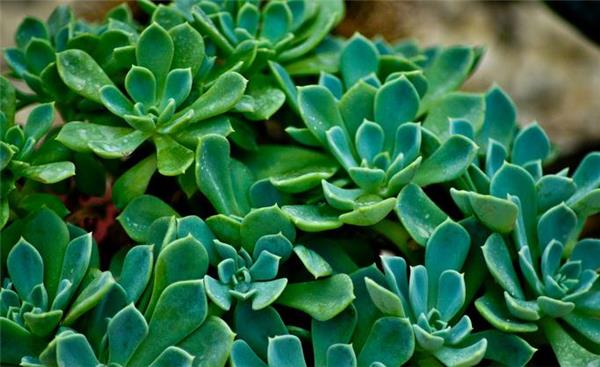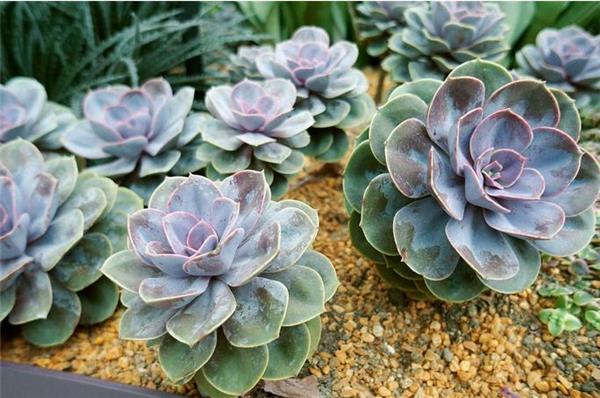How to raise thick-skinned plants best
Thick-skinned plants can also become swallow palm, Yushu and so on, which are our common sedum plants. So, how should thick-skinned plants be raised? Perhaps some friends do not have a special understanding of this. Today, I will give you a brief introduction. Let's learn about it together.

Cheeky basic information
Some people may say that the name thick-skinned is not very elegant, but it also has other names, also known as swallow growth or Yushu. Thick-skinned is just a common name we usually call him. Thick skin is native to South Africa, and it still belongs to the category of bonsai shrubs, which are evergreen all the year round. It grows in a relatively dry place, although it is drought-resistant but not cold-resistant, and it is very fond of an environment with warm sunshine. At the same time, it can live healthily in a semi-overcast environment, and the living conditions in winter can not be less than 6 degrees.

A thick-skinned culture method
1. Soil: thick-skinned plant has strong adaptability and extensive cultivation and management. The mixed substrate of 3 parts of rotten leaf soil and 1 part of sand soil can be used in pot cultivation.
2. Watering: water a little more during the thick-skinned growth period to keep the basin soil moist, but not stagnant water. As the temperature drops in autumn and winter, watering should be reduced. Blossom in winter, strictly control watering, but don't forget to water.
3, lighting: because thick skin likes plenty of sunshine, so when there is sunshine, we need to put thick skin on the balcony as far as possible to carry out photosynthesis. But can not be completely exposed to the sun and direct sunlight, which can also cause thick-skinned branches and leaves to be burned.
4. Fertilization: fertilizing once a month during the cheeky growth period. When the stem and leaf grow too high, the heart should be removed and the plant shape should be lowered to promote its multiple branches. Update and change the basin every spring to keep the plant in a beautiful state.
5. Diseases and insect pests: thick skin is mainly harmed by gray mold and powdery mildew, which can be sprayed with 1000 times of methyl topiramate wettable powder. Insect pests are harmful to scale insects and aphids and are sprayed with 1000 times of 40% dimethoate EC.
6. Pruning: in order to allow thick skin to flourish branches and leaves and grow healthily at the same time, when we prune, it is best to keep the original shape, only for the branches and leaves of old yellow. Don't prune too much at one time, which will damage the cheeky plants.

Matters needing attention in thick-skinned breeding
1. Heart-picking: the thick-skinned seedlings in the new pot should be picked out in time to promote branching; for the older plants, the stem is semi-Lignified, detached and more curved and not erect, and the ornamental value is reduced, so it should be cut short to sprout new branches.
2. Illumination: shade of thick-skinned plants is needed in summer, and there should be sufficient light in other seasons, otherwise the color of the leaf edge will disappear.
3. Change the basin: when changing the basin for the thick-skinned bonsai, you need to leave some old soil, and then add some fresh soil. When fertilizing, you don't need too much. During the growing period, you can water it about twice a week, not too much, but in a hot and humid environment, you need to water too many times. Spray some water mist on the branches and leaves to keep the living environment moist.
Are thick-skinned plants poisonous?
Are cheeky plants poisonous? Thick-skinned plants are not poisonous. In folk, it generally refers to the succulent plant in the shape of lotus flower. Fleshy thick leaves are shaped like gems, and many branches overlap and cluster together. The rosette-shaped leaf disk is named after a blooming lotus flower, which is known as "the flower that will never wither". Placed in the windowsill, balcony and other places, full of interest, like living handicrafts, is a more popular small succulent plant in recent years. Succulent and succulent plants are non-toxic, beneficial to human health and capable of releasing radiation. Absorb carbon dioxide.

This is the end of the introduction of thick-skinned plant culture methods. I believe that after reading it, we have a certain understanding of thick-skinned plant culture. If there are friends who want to raise thick-skinned plants at home, you can refer to the relevant knowledge I introduce to you.
Related
- Wuhan Hospital Iron Tree Blooming Result Was Instantly Frightened by the Gardener Master
- Which variety of camellia is the most fragrant and best? Which one do you like best?
- What is the small blue coat, the breeding methods and matters needing attention of the succulent plant
- Dormancy time and maintenance management of succulent plants during dormancy
- Minas succulent how to raise, Minas succulent plant pictures
- What are the varieties of winter succulent plants
- How to raise succulent plants in twelve rolls? let's take a look at some experience of breeding twelve rolls.
- Attention should be paid to water control for succulent plants during dormant period (winter and summer)
- Watering experience of twelve rolls of succulent plants
- Techniques for fertilizing succulent plants. An article will let you know how to fertilize succulent plants.



